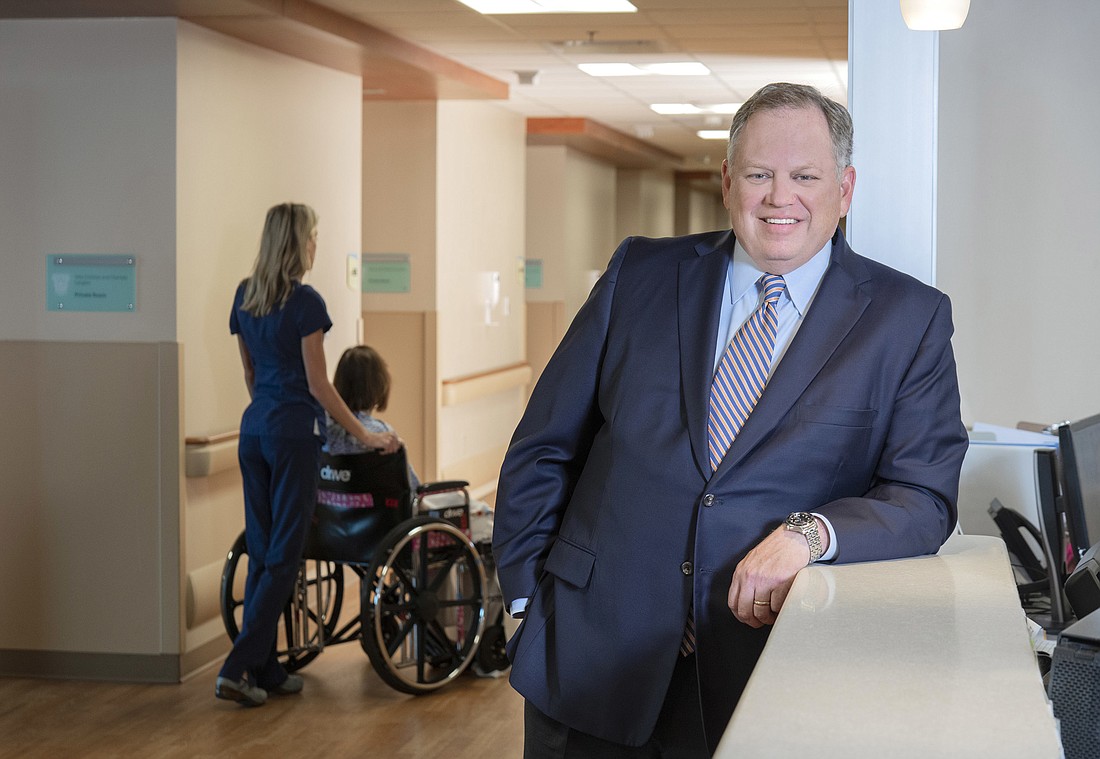- April 10, 2025
-
-
Loading

Loading

Few things illustrate the coronavirus pandemic-led budget crisis at Sarasota Memorial Hospital better than an N95 mask.
Before COVID-19, on average, the community nonprofit hospital paid about $0.51 cents per mask, buying in bulk. In the past three months, that price has gone up to $3 to $4 a mask. “It’s astronomical,” SMH President and CEO David Verinder says.
That expense is part of why SMH has spent some $4 million already in this fiscal year on personal protective equipment. It's spent an additional $1.3 million on ventilators, disinfection equipment and lab testing equipment, Verinder adds. While expenses like that are rising, the hospital’s revenues are dropping. Revenue fell $16 million in March, for example, and over the entire pandemic the hospital is down $47 million in operating revenue compared to its budget.
'The first week of March, we actually had our best week we’ve ever had. We were having meetings about where to put all the extra cars in the parking lot. But by the end of March, we fell off a cliff — a really steep cliff.' David Verinder, Sarasota Memorial Hospital
Verinder also projects operating margins will fall by at least 50% in the current fiscal year — and that can get worse if COVID-19 cases keep climbing. That makes financial projections, including PPE expenses, a moving target. “There’s no rulebook,” he says. “Nobody’s ever had to go through something like this.”
The declines are particularly painful because 2020 — just like for many other companies and entities — was looking like a banner year at SMH. The hospital, which sees some 1.15 million people a year and has 7,000 employees, was in position to grow revenue 20% this year. Its operating budget in fiscal 2020 was $982 million, and inpatient admissions increased by 35% from fiscal year 2016 through 2019.
“The first week of March we actually had our best week we’ve ever had,” Verinder says. “We were having meetings about where to put all the extra cars in the parking lot. But by the end of March we fell off a cliff — a really steep cliff.”
May was bad, he adds, while June, with elective surgeries back, was better. “July is really up in the air,” Verinder says. “I’m not sure which way will it go.”
Verinder says constant and transparent communication — strategically, not by accident — is key to managing people through the crisis. Verinder writes a blog three times a week distributed to hospital staff and he’s on a biweekly YouTube video with updates.
He’s also learned the value of being flexible when addressing employees. “It can change everyday. What you think you know one day can be different the next day,” Verinder says, in regard to CDC coronavirus protocols and other science-based information. “Don’t speak in absolutes.”
Another lesson? Prepare for the long-term in any crisis, particularly in keeping staff and employees motivated in spite of fatigue. With hurricanes and other similar situations, the game plan was to expect things to last up to two weeks. That’s not this pandemic. “From the beginning we knew it was going to be a marathon, not a sprint,” Verinder says. “We just didn’t know how long of a marathon it was going to be.”
Hospitals across the region are grappling with dual problems: keeping patients alive and keeping budgets from collapsing. Hear from more hospital executives by clicking the links below: